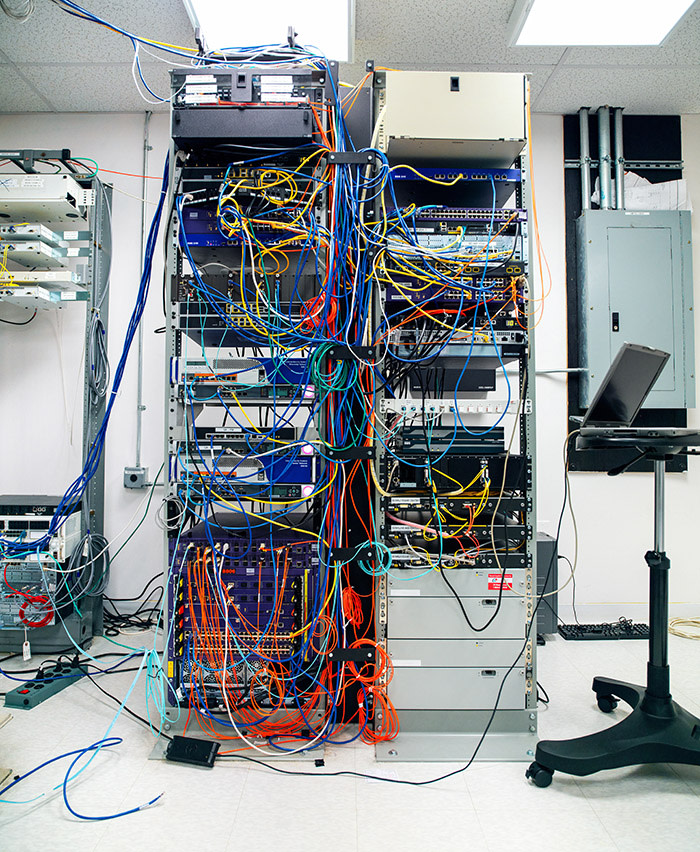Strategies for hunting out electronic evidence

Roula Khalaf, Editor of the FT, selects her favourite stories in this weekly newsletter.
Evidence used to come in boxes. Lawyers would roll in cardboard files full of documents relating to a deal: the contracts, letters and minutes from meetings.
Now, it comes in networks. Companies are generating sometimes millions of digital communications a day: emails, text messages, Google hangouts and Slack chats, which all have to be examined to find the one gem of information that could win a case.
Several innovative law firms are rethinking their approach to ediscovery — that search for the needle of evidence in a vast electronic haystack — in order to move beyond coping with the problem to creating opportunities for clients. In order to help keep corporate litigation costs down, they aim to use new machine learning technologies and expert teams to lower the expense, speed up the process and ensure that only the necessary documents are handed over to their opponents.
Christine Payne, a litigation partner at Kirkland & Ellis and vice-chair of the firm’s electronic discovery committee, says the potential amount of electronic evidence requiring processing started to “skyrocket” out of control in 2006, when US law included electronically stored information in the list of data that could be used or required to be searched during the discovery process.
Kirkland & Ellis uses a combination of automation and humans. Technology is faster, for example, at recognising linguistic patterns as well as keywords, locating relevant documents even if they do not refer to the name of a product or a deal, or spotting references to other documents that the opponents should have supplied.
“Tools allow us to cut through the volume and sort the wheat from the chaff. But there is no tool today — and there never will be — that can really replace a strategic human mind in thinking: ‘What are the trial needs of the case? What is the evidence that we need? And what do we have to do to comply with the rules and help the other side with their case?’” Ms Payne says.
Baker McKenzie uses several data analytics and machine learning tools so it only has to search through a sample of the data. It uses a technology called Relativity to review documents and, in some cases, it uses another, called eBrevia, to do due diligence on contracts, looking for clauses that may have different wordings but the same meaning.
Lawyers teach the algorithm what they are looking for by applying keywords on a small segment of the overall batch of documents. By itself, the program can then search for documents that are “conceptually similar”, because they talk about the same deal, or country or project, says Bryant Isbell, director of global practice support at Baker McKenzie. Then, lawyers check the machine’s working, sampling about 10 per cent of the documents that it declared not relevant, to make sure they really are unnecessary to the case.
“We did this for a client in Hong Kong, with 650,000 documents. Based on a team of 10 contract attorneys using an old approach, it would have taken about 13,000 hours and cost about $1.1m to $1.2m,” he says. “We ultimately saved the client around $327,000, so it was huge, huge savings for the client because we were able to leverage technology and look at much, much less of the data.”
While most advances in ediscovery have been focused on the US, Mr Isbell says Baker McKenzie has the advantage of being one of the few large international firms to adopt these techniques globally. Often, lawyers are racing against the clock to pinpoint the right documents and so it is an advantage that lawyers from all over the world can supervise the discovery technologies — while keeping data in the territory where it must remain for legal reasons.
Nelson Mullins saved even more money for one of its clients, health insurer Anthem, because it was able to do the ediscovery for several cases at once, lowering costs by about $50m. John Martin, partner and chair of ediscovery, says its large, in-house ediscovery team provided the scale to work with a big company like Anthem. “Our experience with Anthem’s data meant we were able to speak in a very informed way . . . when we had a very compressed time period to respond to this request,” he says.
Many law firms have traditionally outsourced discovery to suppliers — but the difficulties of wading through the tangle of evidence in ediscovery have meant some are bringing it back in-house. John Rosenthal, ediscovery and information governance practice leader at Winston & Strawn, says he recognised in 2008 that it would be hard to continue to outsource to low-cost service providers in the Philippines and India. Instead, he believes lawyers need to work closely alongside workers with tech skills so that ediscovery is an integral part of planning for a trial. The firm has 26 technologists who are specialists in specific software and databases.
“People always think about the great trial lawyer,” he says. “[But] the delivery of legal services goes way beyond lawyers, associates and partners.”
Explore the North American Innovative Lawyers 2017 tables
- FT 25 Most Innovative Law Firms and Legal Service Providers
- Accessing New Markets and Capital • In-house
- Collaboration
- Data, Knowledge and Intelligence • In-house
- Driving Value
- Enabling Business Growth • In-house
- FT 25 Most Innovative In-house Legal Teams
- Litigation and Disputes • In-house
- Managing and Developing Talent • In-house
- Managing Complexity and Scale • In-house
- New Business and Service Delivery Models • In-house
- New Products and Services • In-house
- Rule of Law and Access to Justice • In-house
- Strategy and Changing Behaviours • In-house
- Technology • In-house
Comments